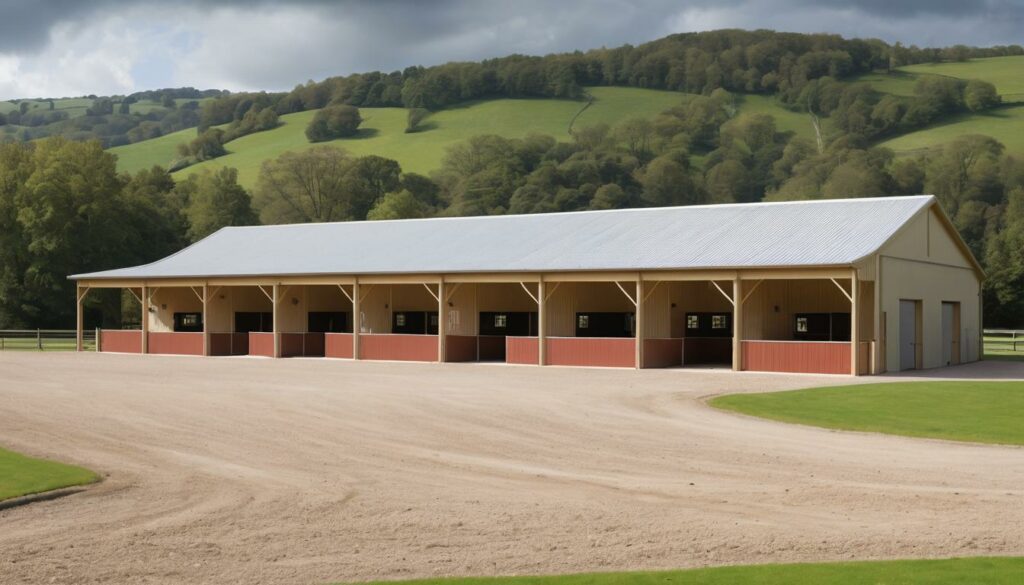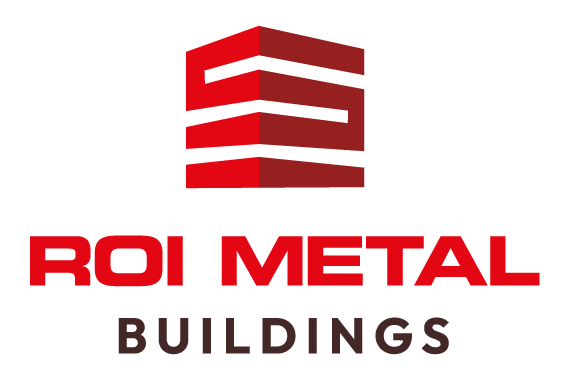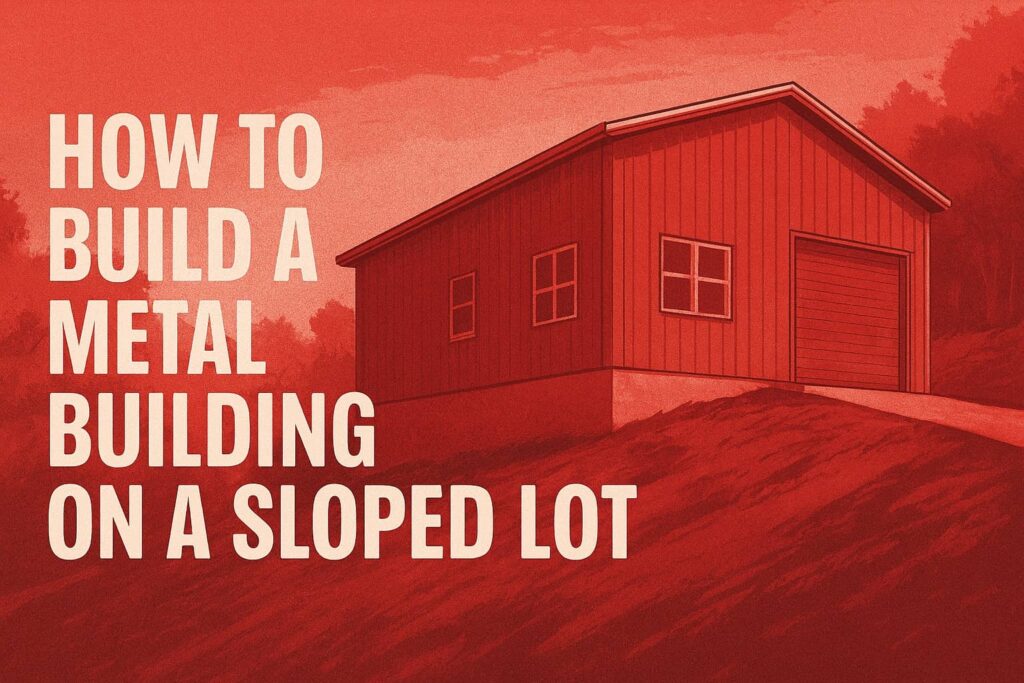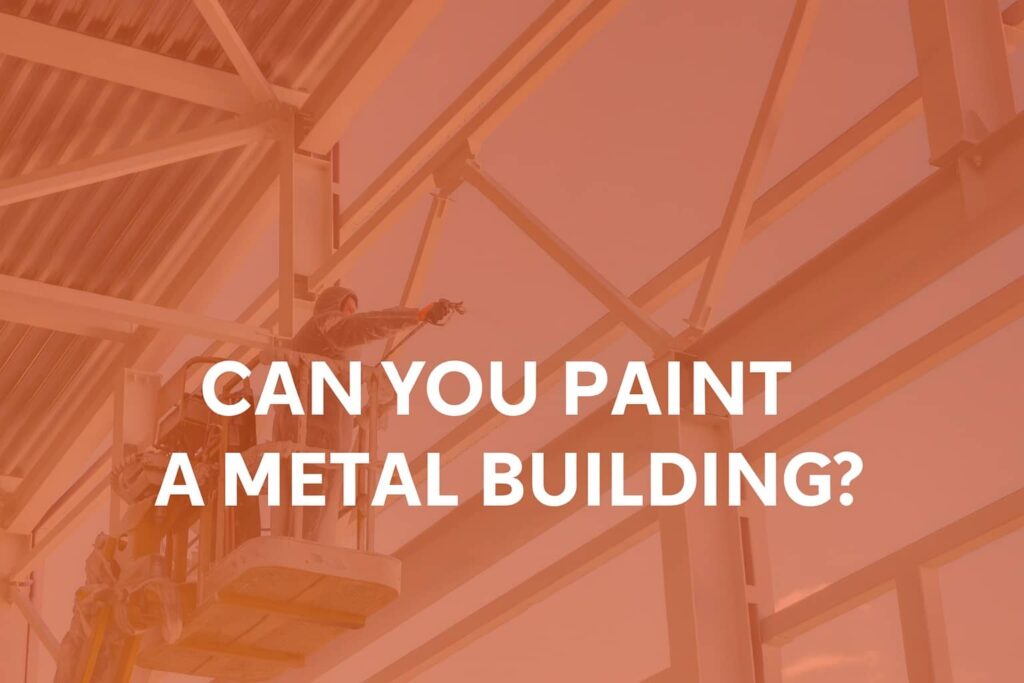Safety in equestrian buildings is more than just a priority; it’s a necessity that ensures both horse and rider can thrive without worry. From preventing potential accidents to meeting regulatory standards, the focus on security within these spaces demands attention to every detail. For those deeply invested in equestrian sports or barn management, understanding the nuances of safety considerations for equestrian buildings is crucial.
Exploring specific risks such as fire hazards and environmental impacts reveals how interconnected our measures must be. We’ve invested significant time researching the most reliable materials and strategies so you don’t have to. Did you know that using non-combustible materials like metal for constructing stalls not only meets fire codes but also enhances durability? Today, let’s dive into essential considerations you might not have fully explored yet, beginning with how to protect your facility from fire-related dangers.
This article is the next of our new series about private residence metal equestrian buildings. Last week we wrote an article detailing the best practices for designing an equestrian building. Stay tuned over the coming weeks as we take a deep dive into these facilities. If you’ve followed our articles in the past, you know the value that’s hidden within these articles. If you’re planning on adding a private equestrian building to your property, look no further than ROI Metal Buildings for all of the crucial information to get started!
When it comes to equestrian buildings, essential safety considerations may include proper ventilation, fire prevention measures, secure stall design, and adequate lighting. It’s crucial to ensure that the building and its surroundings meet safety standards to reduce accidents and injuries for both horses and handlers.

Fire Safety Measures
When it comes to safeguarding equestrian facilities from fire hazards, every measure taken could have life-saving implications for both horses and humans. To effectively mitigate the risk of fire, adhering to the guidelines set by the National Fire Protection Association’s Fire Code (NFPA 1) is imperative. One key recommendation involves utilizing non-combustible materials, such as metal, during the construction of stalls and roofing. This significantly reduces the risk of fire spreading within the building, offering additional time for safe evacuation in case of an emergency.
Specialized Sprinkler Systems and Preparedness
In addition to using non-combustible materials, installing a specialized sprinkler system designed for agricultural buildings can be a vital fire safety measure. These systems are tailored to address the unique requirements of equestrian facilities, providing crucial protection for both horses and human occupants. While prevention plays a crucial role, preparedness in the event of a fire is equally vital.
To enhance preparedness, ensuring that ample fire extinguishers are readily accessible throughout the premises is essential. All staff members should undergo comprehensive training in their proper usage and be well-versed in executing effective fire safety protocols. In the event of an emergency, swift and decisive action can make a critical difference in containing and extinguishing fires before they escalate.
Electrical System Maintenance and Evacuation Planning
Maintaining electrical systems is another key component in mitigating fire risks within equestrian buildings. Regular, thorough inspections of electrical outlets, wiring, and appliances are fundamental. By identifying potential issues proactively, such as faulty wiring or overloading circuits, the risk of electrical fires can be significantly reduced.
Moreover, drafting a clear and concise evacuation plan that includes marked exits and escape routes is paramount for ensuring orderly and safe evacuations in case of a fire emergency. Employees must be familiar with this plan and participate in regular fire drills to reinforce their understanding of the procedures.
Implementing these comprehensive fire safety measures not only safeguards the physical infrastructure but also ensures the wellbeing of both equine occupants and human personnel within equestrian buildings.
With robust fire safety measures in place, it’s crucial to also address the environmental impact controls to ensure holistic safety within equestrian facilities. Moving on from protecting against immediate threats, let’s now dive into sustainable practices for maintaining a safe and environmentally conscious ecosystem.
Environmental Impact Controls
In the realm of equestrian buildings, sustainability isn’t an afterthought; it’s a necessity. Properly managing waste, runoff, and noise is critical for both preserving the environment and ensuring the well-being of the horses.
Using eco-friendly materials in construction is one way to reduce the environmental impact of equestrian buildings. This includes materials with low embodied energy, meaning they require minimal energy for extraction, processing, and transportation. These materials should also be biodegradable or recyclable at the end of the building’s life cycle.
Managing Waste and Runoff
Effective waste management not only limits environmental impact but also contributes to creating a self-sustaining ecosystem within the equestrian facility. Composting horse manure rather than disposing of it through traditional waste channels significantly reduces landfill burden while providing nutrient-rich compost for use in landscaping and farming activities. Additionally, rainwater harvesting systems can effectively mitigate runoff and provide a sustainable water source for non-potable applications such as irrigation and stable cleaning.
Furthermore, integrating green spaces and vegetated buffer zones around equestrian facilities helps manage stormwater runoff by absorbing excess water, filtering out pollutants, and reducing erosion. This approach not only benefits the local ecology but also contributes to creating a more aesthetically pleasing and serene environment for both horses and riders.
Minimizing Noise Pollution
Equestrian facilities often coexist with surrounding communities, making it essential to employ soundproofing materials during construction. These materials help mitigate excessive noise from activities within the facility, ensuring a tranquil environment for both the equines and neighboring communities. Incorporating acoustic design principles during construction and utilizing sound-absorbing materials such as insulation panels can significantly reduce noise propagation from arenas, stables, and other activity areas.
By integrating these environmental impact controls into equestrian building design and management practices, we not only prioritize sustainability but also foster a harmonious balance between equestrian activities and the natural environment.
Next, let’s explore the critical features that enhance the security of equestrian buildings without compromising on aesthetics or functionality.
Building Security Features

In the realm of equestrian facilities, ensuring the safety and security of the horses, riders, and valuable equipment is paramount. Here are some essential security considerations that every equestrian building should incorporate.
CCTV Surveillance
Strategic installation of CCTV cameras within the facility is a vital step in bolstering security. These cameras should be placed at all entry points, such as gates and doors, along with key areas like tack rooms and feed storage. This not only acts as a deterrent for potential intruders but also serves as a crucial tool for monitoring any unauthorized access or suspicious activity. In the unfortunate event of theft or vandalism, the footage from these cameras can provide invaluable evidence to aid in investigations and recovery efforts.
Secure Access Points
Utilizing tamper-proof locks and sturdy metal doors at all entryways ensures that unauthorized persons cannot gain easy access to the premises. Furthermore, installing metal fences around the property and securing them with controlled access points adds an additional layer of protection. An intruder would find it extremely difficult to breach such fortified perimeters.
Alarm Systems and Motion Sensor Lights
Implementing alarm systems that are interconnected with monitoring stations or directly alert designated staff members in case of a security breach is crucial. These alarms should be capable of detecting unauthorized access attempts or any unusual activity within the premises. Affixing motion sensor lights around the facility further enhances security by providing visibility during off-hours and deterring potential trespassers.
The combination of these security measures not only safeguards the premises from unauthorized access but also acts as a proactive deterrent against theft, vandalism, and other security threats.
With these effective security features in place, equestrian buildings can significantly reduce the risk of intrusions, ensuring the safety and well-being of both horses and riders alike.
Electrical Safety Protocols
Equestrian buildings come with specific challenges, particularly in ensuring electrical safety. Whether it’s protecting wiring from curious nibbling or preventing water exposure in wash stalls, maintaining proper electrical safety is crucial for the well-being of horses and humans alike.
One crucial consideration is the use of metal conduits to enclose all wiring. This not only shields against damage caused by rodents but also prevents potential harm to the horses. Additionally, enlisting licensed electricians for installation and routine inspections is vital. These professionals can identify hazards early on and ensure the electrical infrastructure remains safe and functional.
According to the National Institute for Occupational Safety and Health (NIOSH), implementing ground-fault circuit interrupters (GFCIs) in areas with water exposure, such as wash stalls, is advisable. These devices swiftly shut off power in case of a ground fault, minimizing the risk of electric shock. Furthermore, using moisture-resistant lighting fixtures in areas with high water exposure is crucial to withstand such conditions without compromising safety.
For instance, imagine a scenario where a horse accidentally knocks over a water bucket, causing moisture to come into contact with lighting fixtures and electrical outlets. If these installations are not adequately moisture-resistant, there could be a significant risk of electrical hazards and potential harm to both horses and humans present in the vicinity.
Think of these electrical safety measures as protective shields erected around your equestrian building. Just as armor guards against potential harm in battle, these safety protocols shield your facility from unforeseen dangers lurking within its infrastructure.
Ensuring electrical safety within equestrian buildings is not just about compliance; it’s about safeguarding lives. By proactively implementing these measures, you’re not just mitigating risks – you’re actively prioritizing the well-being of your equine companions and those who care for them while promoting peace of mind within your facility.
Safe Architecture: Doors and Windows
The design of doors and windows in equestrian buildings plays a crucial role in ensuring the safety and security of horses and riders alike. When it comes to doors, it’s important to ensure that they are wide enough to allow easy passage for horses without any risk of injury. The choice of sliding doors is preferred over swing doors as they prevent unexpected swings that could startle or harm the horses. By employing sliding doors, there is a reduced risk of injury to the animals and handlers due to unexpected opening or closing. This simple modification can significantly improve the overall safety within the equestrian facility.
Now let’s consider the impact of using shatter-proof glass or protective grills over windows. These small yet effective measures add an extra layer of security by preventing horses from breaking through windows while still allowing ample natural light to enter the building. Providing natural light sources within the equestrian building ensures a comfortable environment for both horses and humans while reducing the dependence on artificial lighting during the day. It’s all about finding a balance between security and creating a pleasant living space for these majestic animals.
In addition to thoughtful design considerations for doors and windows, the material used for their construction plays a significant role in ensuring durability and security. Choosing sturdy, rust-resistant metal doors and frames is essential for withstanding harsh environmental conditions often found in equestrian settings. Moreover, these metal components provide an added layer of security, giving owners peace of mind regarding the protection of their valuable equine assets and ensuring a secure environment for riders and caretakers.
With proper design, attention to detail, and the use of robust materials, equestrian buildings can create a safe and comfortable environment that fosters the well-being and security of both horses and riders.
By implementing these architectural considerations, you not only enhance the functionality of your equestrian building but also demonstrate a commitment to providing a secure and nurturing environment for both horses and riders.
By prioritizing structural elements that maximize safety and comfort for our equine companions, we pave the way for exploring another critical aspect—adequate lighting standards within equestrian buildings.
Adequate Lighting Standards
The right lighting in equestrian facilities does much more than just illuminate the space; it creates a safe and comfortable environment for both horses and humans. Picture a well-lit facility as a stage, where every actor – human or equine – can perform their best without fear of unseen hazards.
Natural vs Artificial Light
In an ideal world, equestrian buildings would rely entirely on natural light. However, this isn’t always feasible, especially during darker months or in indoor facilities. To maximize natural light and reduce the need for artificial lighting during the day, skylights and large windows are essential when designing an equestrian building. This not only benefits the horses by providing them with a more natural environment but also reduces energy costs.
When artificial lighting is necessary, it’s important to choose the right type. LED lights are recommended for horse barns as they are safer, more efficient, and longer-lasting than traditional lighting. They also reduce the risk of fire hazards due to reduced heat emission.
Various lighting fixtures can be used in barns, including LED strips, gooseneck lamps, and even chandeliers for grooming or lounge areas. Each type serves a specific purpose in providing optimal lighting conditions for both activities and comfort.
Safety Matters
Proper lighting is essential for safety and security within equestrian buildings. Well-lit areas like riding arenas and stalls help prevent accidents and injuries by ensuring that all obstacles are clearly visible. In stalls particularly, proper lighting can affect circadian rhythm for horses and be used to maintain coats or assist with breeding plans.
And don’t forget about exterior barn lighting. This improves safety and security by illuminating entry points and deterring nocturnal animals. It also makes it safer to lead horses in or out of the barn in darkness, reducing the risk of tripping over unseen obstacles.
Lastly, consider the use of motion-sensor lights in less frequently accessed areas to conserve energy. By automatically switching off when not needed, they provide an eco-friendly solution to maintaining visibility while minimizing electricity usage.
Incorporating well-planned lighting solutions into equestrian buildings is essential for creating a safe, comfortable, and efficient environment for both horses and humans alike.
As we move forward in our exploration of equestrian building essentials, let’s now direct our attention to the critical considerations regarding ventilation and climate control.
Ventilation and Climate Control
Proper ventilation and climate control are critical for maintaining a healthy and comfortable environment for horses. Metal buildings can be fitted with specialized ventilation systems to optimize airflow and regulate temperature. Insufficient ventilation can result in stagnant, contaminated air within a horse barn, posing significant health risks for both horses and humans.
When it comes to ventilation in equestrian buildings, there are two main types to consider: natural ventilation and mechanical ventilation systems. Natural ventilation relies on buoyancy and wind forces to facilitate airflow, while mechanical ventilation utilizes inlets, exhaust fans, and other equipment to regulate air exchange regardless of external weather conditions.
Natural Ventilation
Natural ventilation systems in horse barns often include features such as lean-tos, open gable ends, or enclosed naturally-ventilated barn designs with strategically positioned inlets and outlets. These systems are designed to provide consistent airflow without creating drafts that could disturb horses. By combining these systems with dry bedding, a comfortable and hygienic environment can be established for horses.
Mechanical Ventilation
In contrast, mechanically-ventilated horse barns require a higher level of precision in their design and construction. These buildings need to be airtight to effectively regulate temperature and humidity levels. Insulation plays a key role in maintaining stable internal climate conditions, with wall insulation typically requiring an R-value in the mid-teens and ceiling insulation requiring an R-value in the mid-twenties. Additionally, the use of a vapor barrier helps prevent moisture from seeping through the insulation.
During warmer months, proper climate control becomes even more critical. High temperatures can lead to heat stress and discomfort for horses if not managed effectively. In mechanically-ventilated barns, fresh air must circulate freely, as stagnant air can contribute to respiratory issues among horses.
For example, roof overhangs can provide valuable shading to reduce overheating in the summer months. This simple architectural feature helps maintain a more comfortable temperature inside the barn while also safeguarding horses from direct sunlight.
By understanding the distinct requirements of both natural and mechanical ventilation systems, equestrian facility managers can create an optimal environment that ensures the well-being and performance of their equine residents.
Effective ventilation is crucial to maintaining a healthy and comfortable environment for horses. By investing in proper ventilation systems, equestrian facility managers can ensure the well-being of their equine residents.
Summary: Safety Considerations for Equestrian Buildings
When it all comes down to it, safety for the horses and the riders is the most important aspect for metal equestrian buildings. If you would like further assistance or guidance regarding metal equestrian buildings, feel free to contact us today at 865-316-9009. Also, if you like our content and want to stay up to date, follow us on Facebook at https://www.facebook.com/roimetalbuildings!



